当前位置:网站首页>深度学习100例 —— 循环神经网络(RNN)实现股票预测
深度学习100例 —— 循环神经网络(RNN)实现股票预测
2022-08-09 22:03:00 【Ding Jiaxiong】
活动地址:CSDN21天学习挑战赛
深度学习100例——循环神经网络(RNN)实现股票预测
- 本文为365天深度学习训练营 中的学习记录博客
- 参考文章地址: 深度学习100例-循环神经网络(RNN)实现股票预测 | 第9天
文章目录
我的环境

1 RNN
1.1 RNN简介
传统神经网络结构:
- 输入层
- 隐藏层
- 输出层
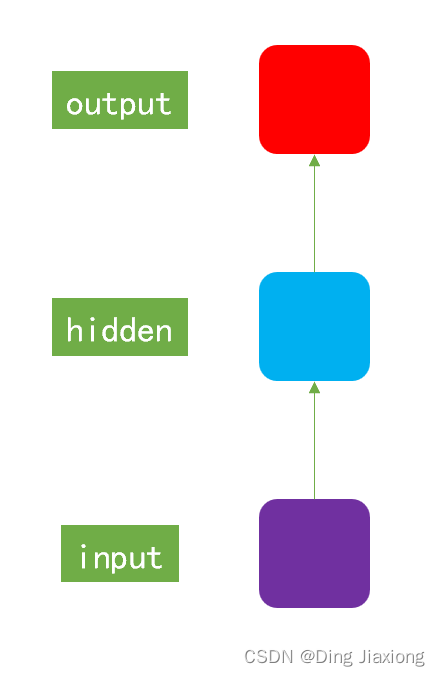
RNN和传统神经网络ANN的最大的区别在于每次会将前一次的输出结果,带到下一次迭代的隐藏层中,一起进行训练。
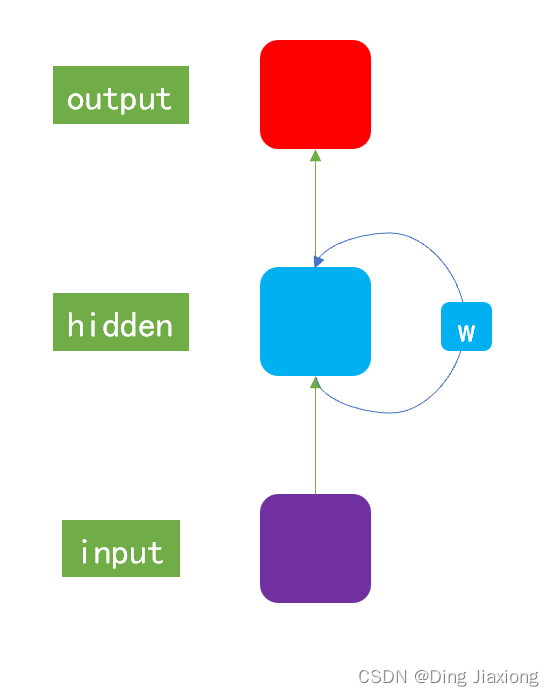
一般以序列数据作为输入,通过网络的内部结构设计有效捕捉序列之间的关系特征,一般也以序列形式进行输出。
1.2 RNN模型作用
- 很好地利用序列之间的关系 → 针对自然界具有连续性的输入序列,能进行很好地处理。
- 适用场景
- 文本分类
- 情感分析
- 意图识别
- 机器翻译
2 准备工作
2.1 设置GPU
import tensorflow as tf
gpus = tf.config.list_physical_devices("GPU")
if gpus:
tf.config.experimental.set_memory_growth(gpus[0], True) #设置GPU显存用量按需使用
tf.config.set_visible_devices([gpus[0]],"GPU")

2.2 加载数据
import os,math
from tensorflow.keras.layers import Dropout, Dense, SimpleRNN
from sklearn.preprocessing import MinMaxScaler
from sklearn import metrics
import numpy as np
import pandas as pd
import tensorflow as tf
import matplotlib.pyplot as plt
# 支持中文
plt.rcParams['font.sans-serif'] = ['SimHei'] # 用来正常显示中文标签
plt.rcParams['axes.unicode_minus'] = False # 用来正常显示负号

读入股票文件
data = pd.read_csv('SH600519.csv') # 读取股票文件
data

划分数据集合
前(2426-300=2126)天的开盘价作为训练集,表格从0开始计数,2:3 是提取[2:3)列,前闭后开,故提取出C列开盘价后300天的开盘价作为测试集
training_set = data.iloc[0:2426 - 300, 2:3].values
test_set = data.iloc[2426 - 300:, 2:3].values
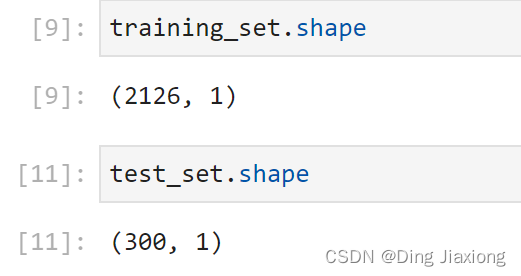
3 数据预处理
3.1 归一化
sc = MinMaxScaler(feature_range=(0, 1))
training_set = sc.fit_transform(training_set)
test_set = sc.transform(test_set)
3.2 设置测试集、训练集
x_train = []
y_train = []
x_test = []
y_test = []
""" 使用前60天的开盘价作为输入特征x_train 第61天的开盘价作为输入标签y_train for循环共构建2426-300-60=2066组训练数据。 共构建300-60=260组测试数据 """
for i in range(60, len(training_set)):
x_train.append(training_set[i - 60:i, 0])
y_train.append(training_set[i, 0])
for i in range(60, len(test_set)):
x_test.append(test_set[i - 60:i, 0])
y_test.append(test_set[i, 0])
# 对训练集进行打乱
np.random.seed(7)
np.random.shuffle(x_train)
np.random.seed(7)
np.random.shuffle(y_train)
tf.random.set_seed(7)
""" 将训练数据调整为数组(array) 调整后的形状: x_train:(2066, 60, 1) y_train:(2066,) x_test :(240, 60, 1) y_test :(240,) """
x_train, y_train = np.array(x_train), np.array(y_train) # x_train形状为:(2066, 60, 1)
x_test, y_test = np.array(x_test), np.array(y_test)
""" 输入要求:[送入样本数, 循环核时间展开步数, 每个时间步输入特征个数] """
x_train = np.reshape(x_train, (x_train.shape[0], 60, 1))
x_test = np.reshape(x_test, (x_test.shape[0], 60, 1))

4 构建模型
model = tf.keras.Sequential([
SimpleRNN(100, return_sequences=True), #布尔值。是返回输出序列中的最后一个输出,还是全部序列。
Dropout(0.1), #防止过拟合
SimpleRNN(100),
Dropout(0.1),
Dense(1)
])
5 激活模型
# 该应用只观测loss数值,不观测准确率,所以删去metrics选项,一会在每个epoch迭代显示时只显示loss值
model.compile(optimizer=tf.keras.optimizers.Adam(0.001),loss='mean_squared_error') # 损失函数用均方误差
6 训练模型
history = model.fit(x_train, y_train,
batch_size=64,
epochs=20,
validation_data=(x_test, y_test),
validation_freq=1) #测试的epoch间隔数
model.summary()

7 结果可视化
7.1 绘制loss
plt.plot(history.history['loss'] , label='Training Loss')
plt.plot(history.history['val_loss'], label='Validation Loss')
plt.title('Training and Validation Loss by DingJiaxiong')
plt.legend()
plt.show()

7.2 预测
predicted_stock_price = model.predict(x_test) # 测试集输入模型进行预测
predicted_stock_price = sc.inverse_transform(predicted_stock_price) # 对预测数据还原---从(0,1)反归一化到原始范围
real_stock_price = sc.inverse_transform(test_set[60:]) # 对真实数据还原---从(0,1)反归一化到原始范围
# 画出真实数据和预测数据的对比曲线
plt.plot(real_stock_price, color='red', label='Stock Price')
plt.plot(predicted_stock_price, color='blue', label='Predicted Stock Price')
plt.title('Stock Price Prediction by DingJiaxiong')
plt.xlabel('Time')
plt.ylabel('Stock Price')
plt.legend()
plt.show()
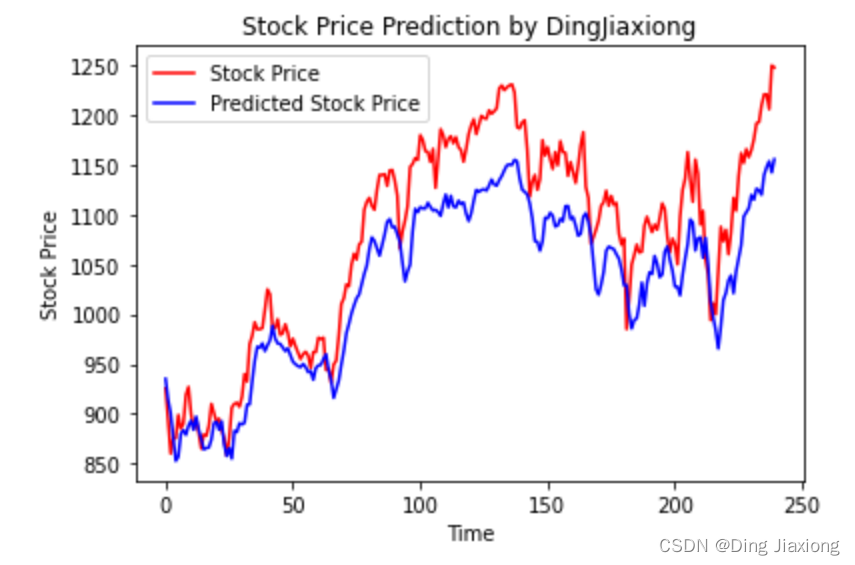
7.3 评估
""" MSE :均方误差 -----> 预测值减真实值求平方后求均值 RMSE :均方根误差 -----> 对均方误差开方 MAE :平均绝对误差-----> 预测值减真实值求绝对值后求均值 R2 :决定系数,可以简单理解为反映模型拟合优度的重要的统计量 """
MSE = metrics.mean_squared_error(predicted_stock_price, real_stock_price)
RMSE = metrics.mean_squared_error(predicted_stock_price, real_stock_price)**0.5
MAE = metrics.mean_absolute_error(predicted_stock_price, real_stock_price)
R2 = metrics.r2_score(predicted_stock_price, real_stock_price)
print('均方误差: %.5f' % MSE)
print('均方根误差: %.5f' % RMSE)
print('平均绝对误差: %.5f' % MAE)
print('R2: %.5f' % R2)

边栏推荐
猜你喜欢
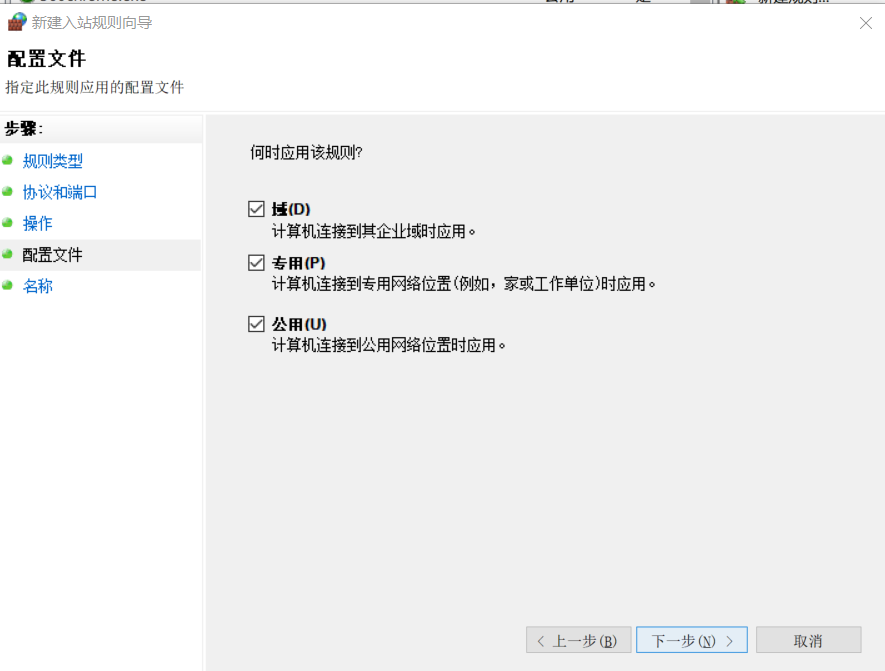
FileZilla搭建FTP服务器图解教程

好未来,想成为第二个新东方

在“企业通讯录”的盲区,融云的边界与分寸

月薪5K的运维小白如何成为月薪5W的高级架构师?
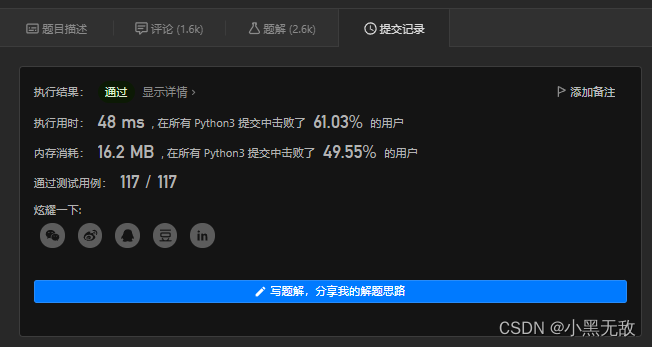
Xiaohei leetcode's refreshing rainy day trip, just finished eating Yufei Beef Noodles, Mala Tang and Beer: 112. Path Sum
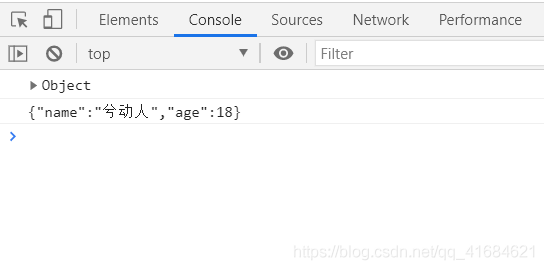
Basic JSON usage

Blender程序化建模简明教程【PCG】
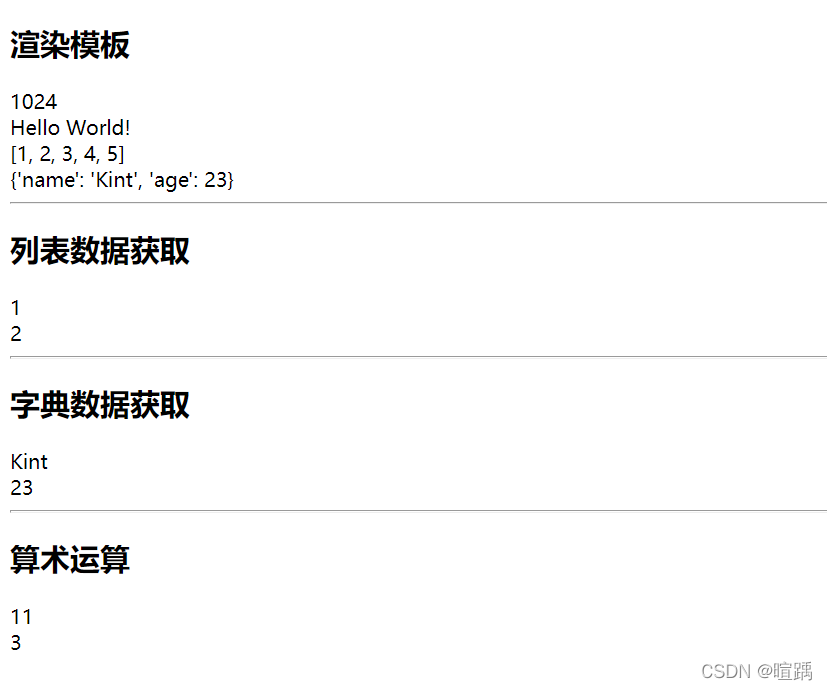
Flask introductory learning tutorial

chart.js面积图曲线图统计插件
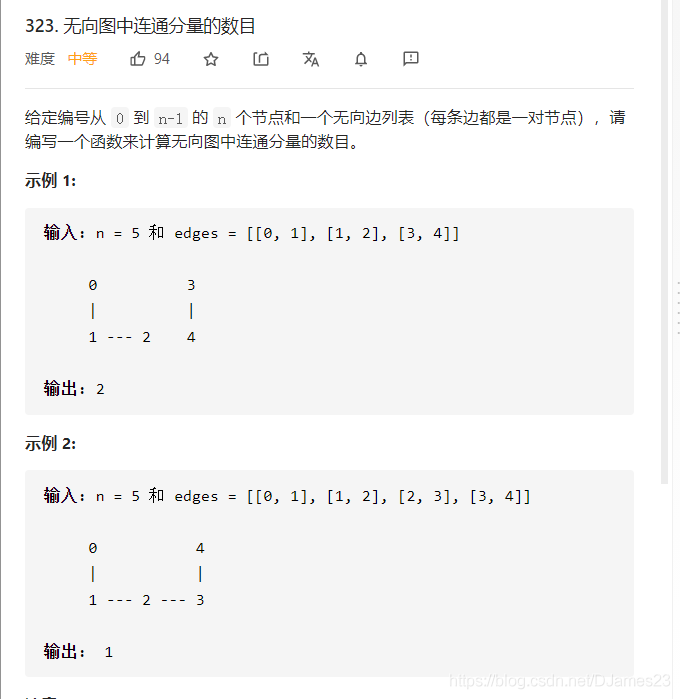
leetcode:323. 无向图中连通分量的数目
随机推荐
charts.js插件实现的散点图样式
leetcode:323. 无向图中连通分量的数目
String hashing (2014 SERC J question)
Basic operations of openGauss database (super detailed)
Five Star Holdings Wang Jianguo: Deepen the track with "plant spirit" and promote growth with "animal spirit"
R语言将列表数据转化为向量数据(使用unlist函数将列表数据转化为向量数据)
MLOps的演进历程
NodeJS使用JWT
从产品角度看 L2 应用:为什么说这是一个游乐场?
leetcode:321. 拼接最大数
Activiti7审批流
【软考 系统架构设计师】案例分析⑤ 质量属性和架构评估
leetcode 刷题日记 计算右侧小于当前元素的个数
Redis
深度剖析 Apache EventMesh 云原生分布式事件驱动架构
大型分布式存储方案MinIO介绍,看完你就懂了!
js数组对象去重
工作经验-组件封装(拖拽排序组件)
Tencent continues to wield the "big knife" to reduce costs and increase efficiency, and free catering benefits for outsourced employees have been cut
leetcode:286.墙和门